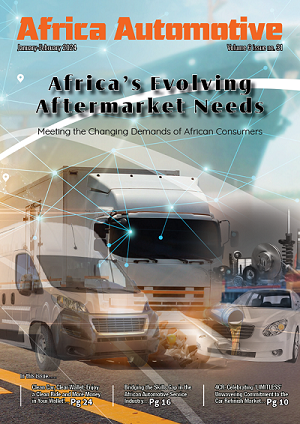The Government ban on importation of used vehicle spare parts has caused uproar as expected, especially from dealers who claim the move will deny them a livelihood.
We established that the use of second-hand spare parts was mainly due to non-availability of new parts locally and rampant use of counterfeit and substandard spare parts.Apart from the technical difficulties of setting up industries for the ever-rising number of models, the task force observed challenges relating to taxation which made local products not to compete favourably with the imported ones.
Set up capacity
Nonetheless, the team observed that the country has capacity to produce tyres, tubes, batteries, windscreens, oil filters, gaskets, bushes, suspension springs, seats, seat belts, oil seals, air cleaner element, shocks and spark plugs. However, other products required local industries to set up the necessary capacities, especially for popular models.We therefore recommended that incentives be given to local manufacturers and the ban on the importation be gradual as local capacity was developed.The discussion on the harmonisation of age limit for the importation of used vehicles in EAC region has also been on for more than a decade and agreement is yet to be reached. Although Kenya is currently implementing an eight-year rule with a view of cutting the age further, the rest of the member sates are either implementing a 10-year rule or no age limit at all.The impasse led to the recommendation by the stakeholders for a study on the impact of imported used motor vehicles on the EAC economy.
East African Business Council (EABC) commissioned the study.I was privileged too in 2014 to lead a team that visited all the five member states of EAC to engage with the stakeholders who included revenue and environmental authorities, government ministries, hospitals, traffic police, insurance companies and other organisations in the private sector.One of our findings was that over 85% of the vehicles imported to the region were used within an average age of about 15 years and annual importation cost of $2.01 billion (Sh200 billion) compared to total taxes collected over the same period of about $596 million (Sh59.6 billion).The impact on safety, health and environment was evident as economic losses due to road accidents was estimated at average of four per cent of GDP while increased poor air quality in most of the urban centres was a major contributor to acute respiratory diseases and greenhouse gases. This is in addition to declined vehicle efficiency due to old age.
Increased productivity
Limiting the age of imported used vehicles will result in reduced numbers and lead to higher average price. In short term, this will affect small businesses and low-income earners, and reduce government revenues. However, in long term this is likely to reduce traffic congestion, leading to a substantial increase in productivity in the economy, reduced fuel consumption, improved air quality and road safety. Used motor vehicle business makes the region more of a trading economy rather than an industrial and technological hub. The use of second-hand goods slows down a country’s industrial development.
On the flip side, a systematic phased out implementation of the vehicle age limit together with increasing capacity of local manufacturers to take care of deficit created will spur local demand, thus encouraging and accelerating technology and industrial development.This will be done through installation of efficient assembly lines, support in the whole value chain system and human resource development. The industry will require raw materials and auto parts from various industries and this will spur growth in other economic sectors.To have this strategy succeed and to mitigate on the impact of age limit, several policies need to be put in place. These include transport planning and land use to promote the use of public transport and non-motorised means as an alternative to the use of private vehicles.This will also guarantee road safety and security.





